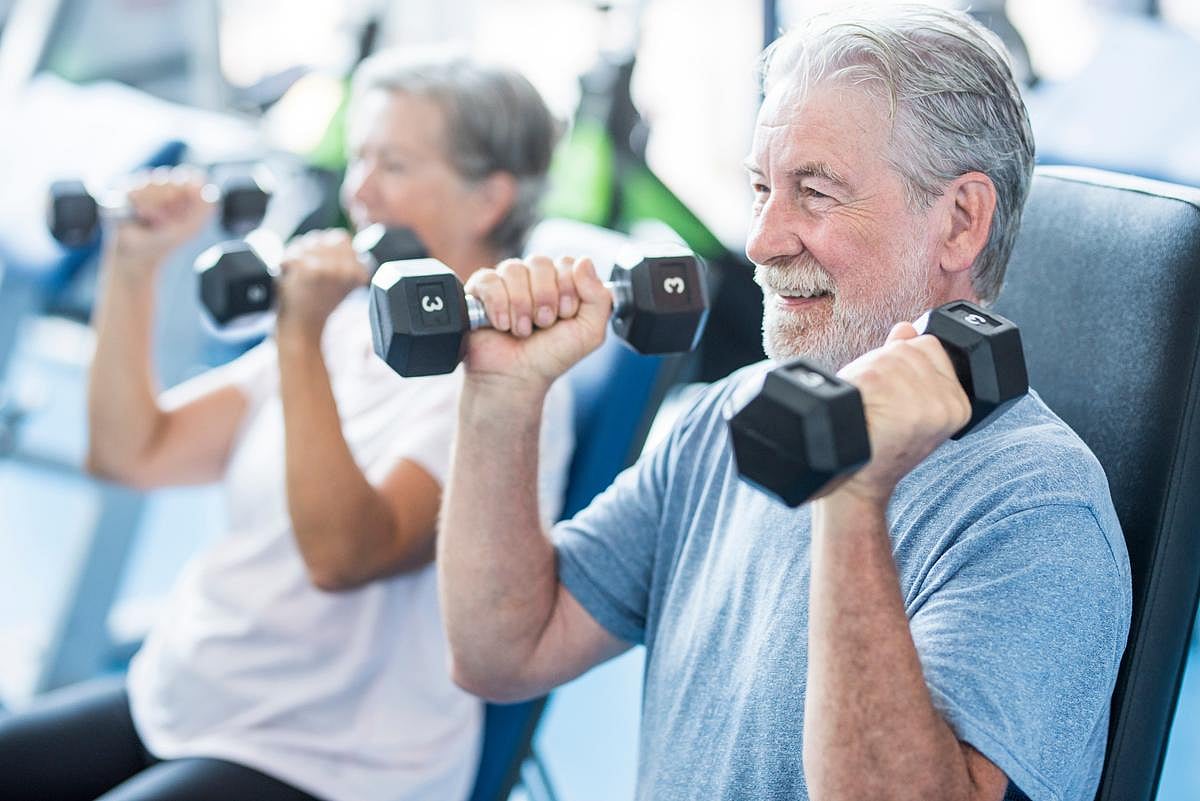- Covid Rapid Antigen Test *NEW* Price - $50.00
- No Appointments required - Call 716-799-8700
Get Healthy!

- Dennis Thompson
- Posted July 7, 2025
Rheumatoid Arthritis Patients Benefit From Blood Flow-Restricted Strength Training
Folks who work out to ease their rheumatoid arthritis (RA) symptoms might find some relief from an unexpected source – a blood pressure cuff.
People who apply pneumatic cuffs to a limb while working out experience reduced pain and improved strength and physical performance, a small-scale study indicates.
This new form of exercise – called blood flow-restricted resistance training – could offer fresh hope for people with RA, researchers report in the journal Disability and Rehabilitation.
Restricting blood flow to a limb during strength training forces muscles to work harder, even if a person is using lighter weights or less effort, researchers explained.
“RA can cause a loss of muscle mass and strength, which affects day-to-day activities, independence, and increases the risk of falls and fractures,” lead researcher Hunter Bennett, a senior lecturer in exercise and sport science at the University of South Australia, said in a news release.
“Resistance training is one of the best ways to rebuild that strength, but for people with RA, using heavy weights can be difficult or harmful due to pain, fatigue or injury risk,” Bennett said. “This is where blood flow-restricted resistance training can help.”
For the pilot study, researchers had 12 people aged 45 to 75 with RA work out with cuffs restricting blood flow to the limb being worked. The people worked out twice a week for eight weeks.
All of the participants liked the workouts, and attended 81% of the training sessions, results showed.
All measures of strength increased for the participants, and they reported a significant reduction in their perceived pain and wellness, researchers said.
They also experienced a significant improvement in their walking speed when ambling along at a regular pace.
Only one person reported a side effect, saying it made them feel temporarily nauseous. Resting between exercises and alternating between upper and lower body exercises resolved the problem, researchers said.
This approach could help people with RA get the strength training they need, even if they find it hard to lift heavy weights, Bennett said.
“Many people with health conditions are understandably deterred by exercise, yet it is often one of the best things they can do to improve their condition,” Bennett said.
“This kind of training could be a game-changer for people with rheumatoid arthritis,” he continued. “It offers a way to build strength and reduce pain without pushing through discomfort – and that’s incredibly empowering for people who’ve often been limited by their condition.”
These results create the foundation for a larger-scale trial that would compare blood flow-restricted exercise against more traditional exercise approaches, researchers said.
More information
The Cleveland Clinic has more on rheumatoid arthritis.
SOURCES: University of South Australia, news release, July 1, 2025; Disability and Rehabilitation, Feb. 13, 2025
